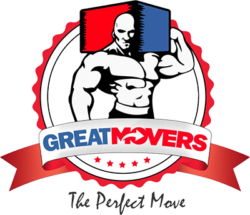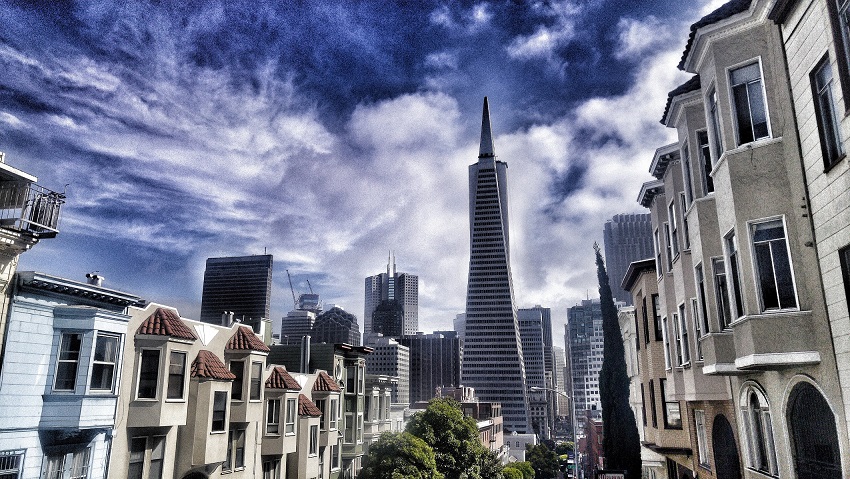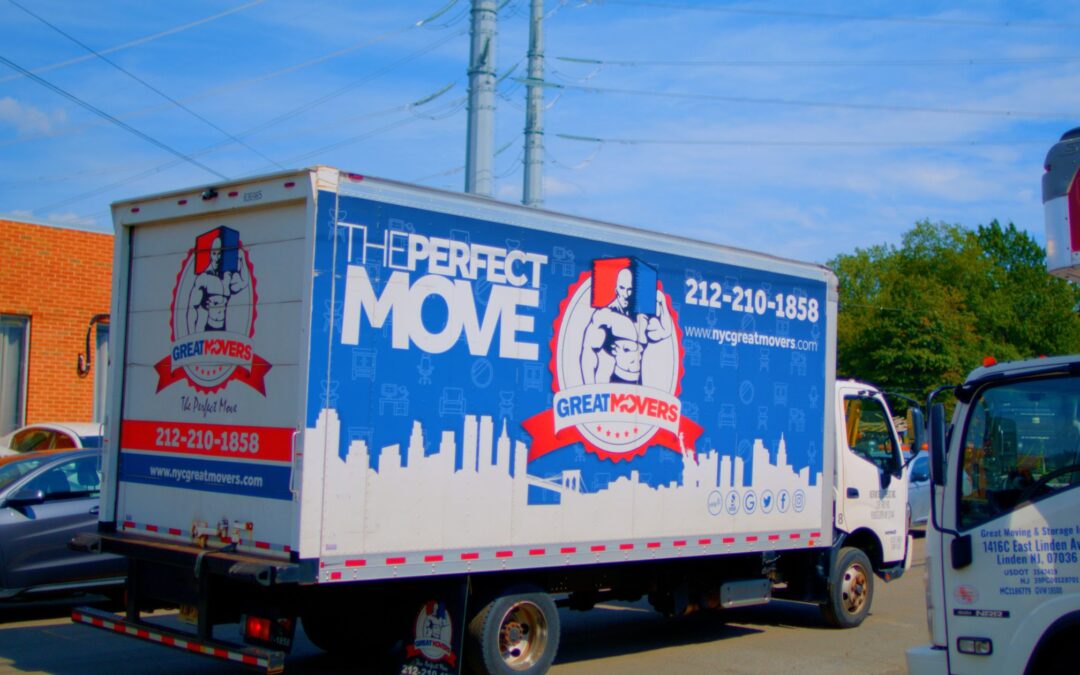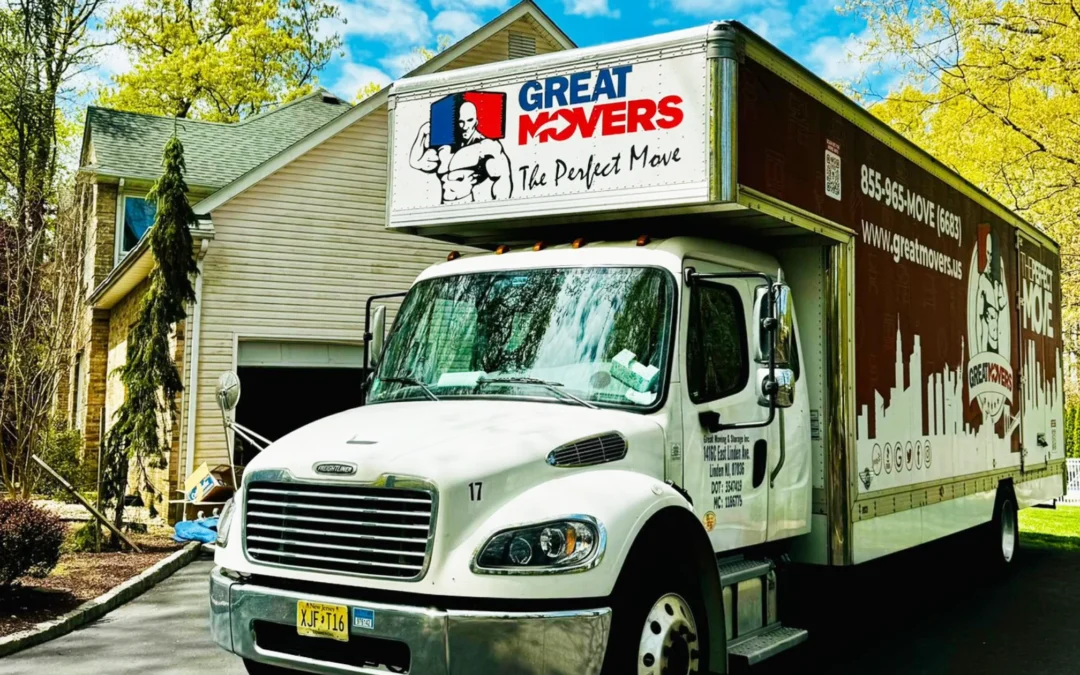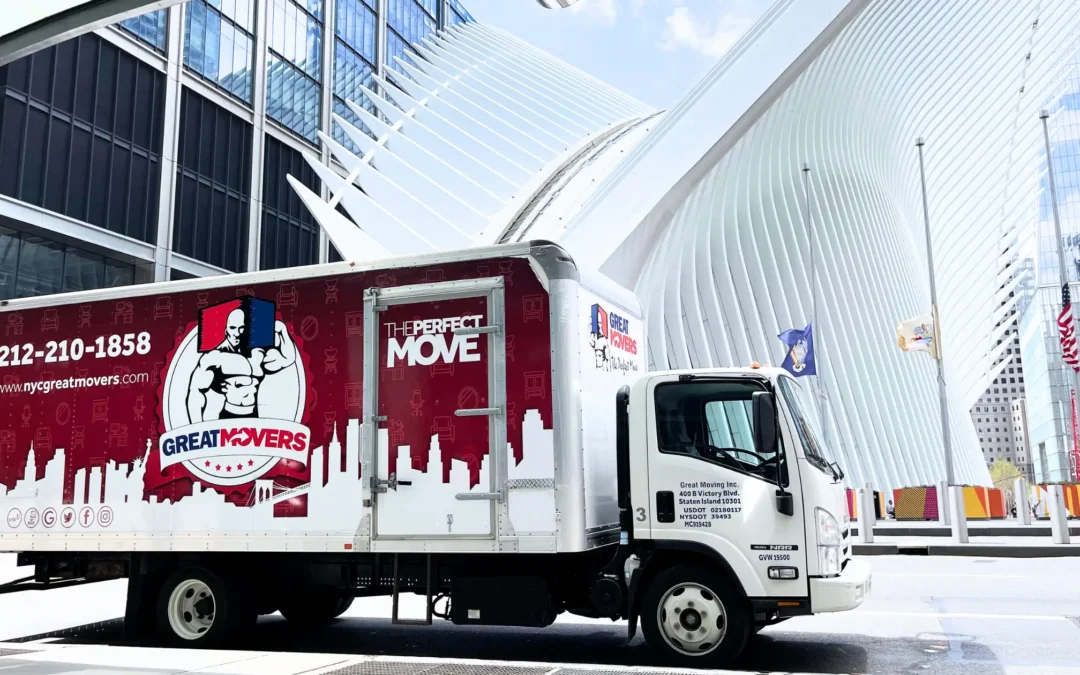New York City has five distinct boroughs, but even within Manhattan, you’ll find very distinct neighborhoods as well. Depending on what you’re looking for you might realize that while you were dreaming of SoHo, a place in the East Village might be more your style. So whether you’re moving from another state or maybe even a different neighborhood, there are a few things you should consider before making your decision.
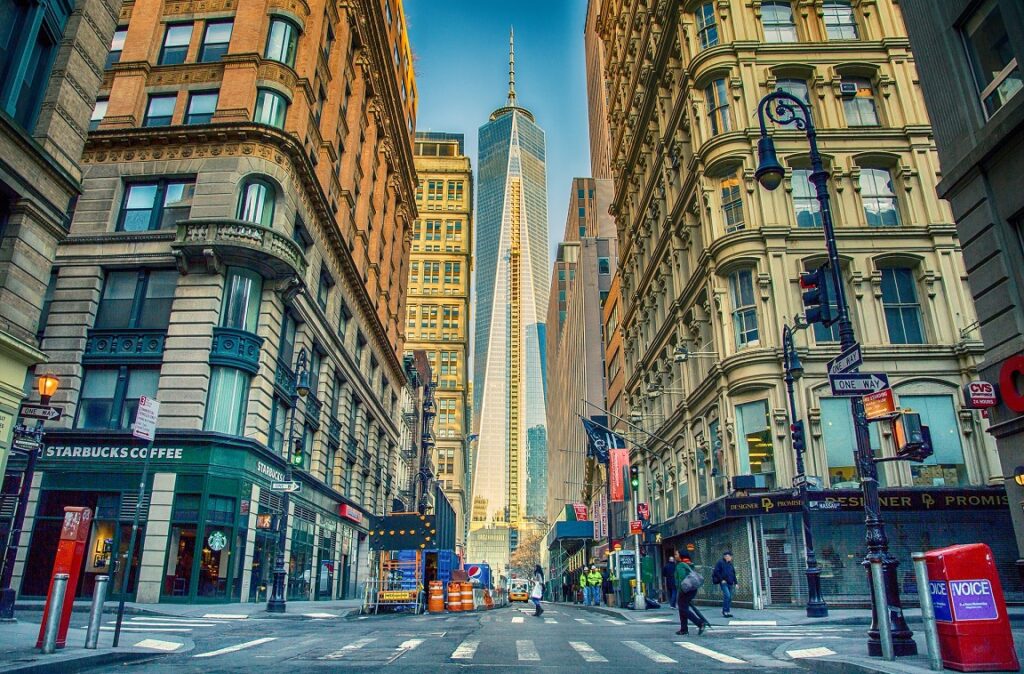
Understand the Neighborhood
You might have heard about the various NYC neighborhoods from TV shows and movies, but keep in mind that neighborhoods change quickly and what might have been true in the 90s or early aughts don’t necessarily hold true today. When choosing which neighborhood to move to in NYC, the best way to figure out where you want to live is to hit the streets. Luckily, NYC is extremely walkable so you can cover a majority of the city in a few days and really check out each neighborhood.
One of the best ways to choose the right Manhattan neighborhood for you is to find ones that fit your specific needs. If you’re looking for a great night life, you might not want to live in the Financial District. And if you’re looking for a quiet location you might avoid the East Village. The trick is to understand what matters the most to you: location, space or price.
If space and price are important to you, you might want to look at places off the beaten path. However, if location is important – maybe you want to be close to work or close to other amenities – then you should be flexible on both space and price. Sadly, it’s hard to get it all so make sure that you have your priorities set.
More importantly, keep public transportation in mind. While most neighborhoods in NYC have more than one train line, consider convenience to work. If you live off the 1, 2 or 3 line but work off the 4, 5, 6 then your travel time will take that much longer. And while you could shell out for a car, most apartments don’t offer in-house parking and traffic is pretty awful.
Now that that’s out of the way, let’s looks at some neighborhoods. We’re only covering Manhattan neighborhoods, but there are plenty of vibrant neighborhoods in the Bronx, Queens, Staten Island, and Brooklyn.
For Nightlife
If you like the night life scene then you’ll absolutely want to look at the East Village and Lower East Side. The East Village is home to St. Mark’s Place, which has a variety of great late night haunts like McSorley’s, Kenka and Crif Dogs (which also has the hidden bar Please Don’t Tell behind it). There’s a lot of cheap and delicious food in the area as well. Rents tend to be a bit more expensive here as it’s fairly central to plenty of train lines. The East Village spans from 14th street all the way down to Bleecker Street and from the Bowery and going to the East River. The East Village attracted a lot of musicians and hippies back in the 60s making it a great place to catch some amazing bands. In fact, one of the most iconic punk rock clubs, CBGBs, was in the East Village. Sadly, it closed in 2006, but plenty of iconic bands performed here such as Blondie, the Talking Heads, The Ramones, Joan Jett and the Blackhearts, and more. Nowadays, if you want some good live music, you can head to Rockwood Music Hall and Webster Hall.
If you’re looking for a neighborhood that’s a bit cheaper and still offers a good nightlife scene then you’ll want to look into the Lower East Side. This neighborhood is located roughly between Canal Street and East Houston and starts at the Bowery and extends to the East River. While rents are increasing in this area due to new development, you can still find a fairly affordable apartment. You might not be close to any train lines though, which is a bit of a bummer. And those dive bars that you might be imaging? They’ll all but gone – though for now you still have The Library. You can also hit up some live music venues like Arlene’s Grocery, Pianos, and Mercury Lounge.
As one of the oldest neighborhoods in Manhattan, there’s also a lot of history. Until recently, it’s mainly been a lower-class working location with a predominantly German population back in the 19th century. Since then, it has attracted many Chinese immigrants who have settled in the area south of Delancey Street and west of Allen Street. While gentrification has pushed many of the Chinese immigrants out to Brooklyn, you can still find some delicious Fuzhoun cuisine in the area.
For LGBTQI+
While most of NYC is LGBTQI+ friendly the best places to live if you want a very accepting neighborhood is either the West Village or Chelsea. That is, of course, if you can afford it. Apartments are very sought after in both of these locations as they’re hotspots for some of the best food in the NYC and some pretty decent nightlife. And, of course, since the West Village is so close to New York University and Washington Square Park, apartments rents tend to be some of the most expensive in the city. With that said, you can’t get any friendlier considering the NYC Pride March ends up in the area. And, of course, there’s the famous Stonewall park and bar. There’s some debate as to the exact boundaries of the West Village, but in general the traditional boundaries are the Hudson River to the west, West 14th Street to the north, Greenwich Avenue to the East, and Christopher Street to the south. You don’t have to be part of the LGBTQI+ group to want to live in the West Village. It’s one of the most sought after neighborhoods in Manhattan for several reasons:
- Close proximity to several major subway stations and the PATH train to New Jersey
- Beautiful tree-lined, cobblestone streets and lovely brownstone buildings
- Major parades such as the Pride Parade and Halloween Parade travels through here
- Famous jazz venues such as the Blue Note and Smalls Jazz Club
And what about Chelsea? Well this is where the NYC Pride March starts! Chelsea starts at 14th street and goes up to the upper 20s and extends from Sixth Avenue to the Hudson River. Similar to the West Village, Chelsea tends to be quite expensive thanks to its proximity to the Chelsea Market, Google and Madison Square Park (home to the original Shake Shack). Much like the West Village, Chelsea has a large LGBTQI+ population with a recent census reporting that 22 percent of its residents were gay couples. It’s also a great place if you’re a lover of the arts as it has over 200 galleries and is home to the Rubin Museum of Art. For those who enjoy taking a more scenic stroll in NYC, Chelsea also boasts the majority of the High Line – the elevated park that was created on the former New York CEntral Railroad. Chelsea tends to be a bit quieter than the West Village so if you’re looking for something a bit more relaxing then you might want to consider moving to Chelsea.
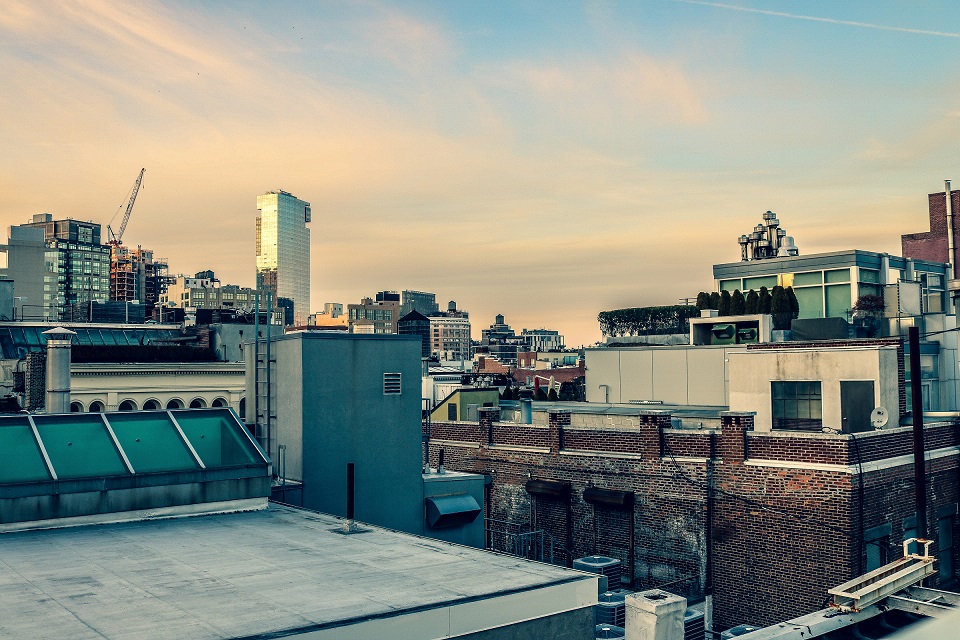
For Families
If you have a family you need space, nearby parks and, of course, schools. If you want a welcoming, family-oriented neighborhood in NYC you’ll want to look at Battery Park City and Kips Bay. Both areas still provide that urban feel while also giving you a sense of community as you’ll be seeing other families often in the neighborhood parks and restaurants.
Battery Park City is perfect for people who want a quiet location that still offers some nice restaurants and bars. This mainly residential neighborhood is bounded by the Hudson River on the west, the Hudson River Shoreline on the north and south, and the West Side Highway on the east. It’s named after The Battery, a 25-acre public park located at the tip of Manhattan. There are plenty of family-friendly activities along The Battery from ping-pong to summer concerts to mini-golf. And if you just want to relax, there’s plenty of green space for you and your family to have a picnic and feel the nice breeze.
With that said, the most important amenity in this location is its better than average schools (The vast majority of residents in this area who are 25 and older have a college education or higher) and location to a lot of public transport including ferries and subways. In fact, you can find almost every train line besides the 7, G, Q, and 6 trains. You can also catch the PATH train here if you want to visit New Jersey for some reason.
Kips Bay might not be as convenient as Battery Park City as it’s further away from nearby train stations, but it’s proximity to the water and decent public schools make it a perfect place for growing families. The area generally has a higher rate of college-educated residents than other parts of Manhattan with elementary schools seeing some of the lowest rates of absenteeism compared to the rest of NYC.
Located on the east side of Manhattan, it’s roughly bounded by East 34th Street and East 27th street and the East River to the east and Third Avenue to the west. You’ll see a variety of building types here from high-rise condos to smaller pre-war apartments. Unlike other areas of Manhattan, Kips Bay looks a bit unfinished due to the fact that the neighborhood has been rebuilt in patches. Many high rises are set away from the street, which ends up exposing party walls that were never meant to be seen in public. There’s even a fun private alley called Broadway Alley that isn’t anywhere near Broadway.
There’s plenty of restaurants and amenities in the area and it tends to be a bit more on the younger side than Battery Park City.
For Young Professionals
If you’re just getting started in your professional career you’re probably more price conscious than anything else. If you’re okay with living a little further away from the “main” NYC look into either Harlem or Inwood.
Harlem especially has great nightlife and while it’s becoming more gentrified, you can still find affordable options. Plus, it probably has some of the best culture in NYC considering it was the birthplace of jazz and still houses the famous Apollo Theater. In fact, since the 1920s and 1930s, Harlem has seen an outpouring of artistic work in the American Black community. In addition to jazz, Harlem made major contributions to hip-hop with artists such as Doug E. Fresh, Immortal Technique, and Mase. It’s not just about music though! Harlem is also home to the largest night market in Manhattan – the Uptown Night Market.
Harlem is one of the larger neighborhoods in Manhattan starting at East 110th street and extending to 155th street on the north and between Fifth Avenue on the East and Manhattan Avenue on the west. Harlem is served by the 2, 3, A, B, C, and D trains so you can get to almost anywhere on the west side of Manhattan easily. You can also jump on the Metro-North railroad and travel either to Grand Central or outside of NYC whenever you feel like it!
If you’re looking for something that’s a bit quieter and close to nature, Inwood is an excellent option. Located at the northern tip of Manhattan it’s bounded by the Hudson River to the west, Spuyten Duyvil Creek to the north, Harlem River to the east, and Washington Heights to the south. It’s off the A train and has a very community vibe to it. Plus you get to enjoy the lovely Inwood Park (the last natural salt marsh in Manhattan), the Hudson River and Harlem River. Next to Inwood Park the next biggest attraction is The Cloisters in Fort Tryon Park, which is part of the Metropolitan Museum of Art and devoted to Medieval art and culture.
It’s a bit secluded so it’s perfect if you’re looking for something that’s a bit calmer. With that said, it’s not entirely residential. There’s a wide selection of restaurants and nightlife options available. Plus, you can hop on the A train and head down to Harlem or the West Village if you want even more options.
For Retirees
You’re over the nightlife scene and don’t need a large apartment now that the kids are out of the house. Instead, you’re looking for some peace and quiet and probably some culture and good restaurants too.
If you have the money, the Upper West Side and Upper East Side offer all of that and then, of course, Central Park. The Upper West Side in particular has several retirement homes that come complete with engaging activities and your own apartment (and in-home worker depending on your needs). Plus, you have access to some amazing places like the American Museum of Natural History and Lincoln Center for Performing Arts. Located between West 59th street and West 110th street to the north and south and Central Park to the east and the Hudson River to the west, the UWS offers beautiful brownstone buildings and tree-lined streets. It’s relatively quiet when you get off the main avenues.
While the Upper East Side tends to be more for “old money” that doesn’t mean you can’t find a cozy home. Located between 59th street and 96th street starting at Fifth Avenue to the East River, this neighborhood has long been the most affluent neighborhood in NYC. The UES is mainly composed of residential buildings with a combination of those built in the Civil War, mansions and townhouses from the beginning of the 20th century, and recent apartment buildings. The area is home to the ‘Museum Mile’ which includes cultural institutions such as the Guggenheim Museum, Metropolitan Museum of Art, El Museo del Barrio, and many more. Both sides of the park offer excellent views, quiet tree-lined streets, decent access to public transportation and delicious restaurants.
For Artists
While you can pretty much go anywhere and be an artist, SoHo and TriBeCa are some of the best neighborhoods to actually see some up-and-coming artists and even set up your own gallery. Both locations have plenty of art galleries that display a different artist every month or so.
In SoHo you also have The New Museum and the International Center of Photography Museum. Since the 20th century it has been the location for artists’ lofts and art galleries and it’s also great for architecture lovers as it boasts the greatest collection of cast-iron architecture in the world! There are approximately 250 cast-iron buildings in NYC with the majority located in SoHo.
This is doubly impressive considering how small SoHo is! While different sources will give different boundaries, the generally accepted location of SoHo stretches from Houston to Canal street between Crosby Street and Sixth Avenue though some go as far east as Lafayette and as far west as the Hudson River.
If you’re not in the mood to check out a gallery, there’s plenty of shopping you can do as SoHo is also home to many high end stores like Tiffany’s, Versace, and The RealReal.
TriBeCa, on the other hand, has a quarterly TriBeCa Art night where they highlight various galleries and artists in different venues. If you’re a film buff, there’s also the TriBeCa film festival which runs for around 2 weeks every June. In recent years, it has expanded beyond films and now includes music, games, and art. Not only is it a great place to expand your art horizons, it’s also a good way to network with other artists.
So where is TriBeCa? The name is short for Triangle Below Canal street which is bounded by Canal Street, West Street, Broadway, and Chambers street. It’s one of the smaller neighborhoods in Manhattan, but it still manages to pack plenty of amenities including interesting architecture and some nice green spaces.
It’s not cheap to live here, of course. In addition to art galleries, both also are home to some very high end fashion lines and delicious restaurants. Not to mention both have excellent access to public transportation. But if you can afford to live here, it’s definitely worth the cost of admission.
There are dozens of other neighborhoods in NYC, and while not all of them are covered here, you should absolutely take a look at all of them before deciding to move. Take your time and make sure to keep your priorities top of mind when looking at apartments. You’ll find your dream home and neighborhood in no time!
FAQ
I want to live in Manhattan but can’t afford it. What can I do?
Living in Manhattan is great, but it’s not a necessity for most people. If you can’t pay the rent, do what everyone else does – look at the outer boroughs or New Jersey. If you want to live in Manhattan no matter what, you’ll have decide if you can live with roommates and how many. Many young professionals end up living 3-4 in a 1 bedroom apartment to save on rent.
How much should I expect to pay in rent for an apartment in Manhattan?
It depends, but a studio bedroom can start at $2,400 and it will only go up from there. If you’re not in a hurry to move, take your time and look during off-peak season which is generally from October through March.
How long does my lease agreement last?
Every apartment will have a different lease agreement, but most should give you a one-year lease with the option to renew at the end. Rent stabilized apartments are required to provide a two year option, which is great if you don’t want to stress about yearly rent increases!
